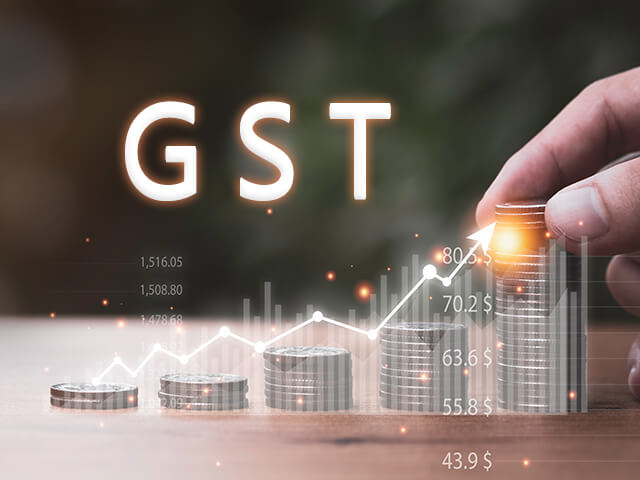All Information about GST
Many times, we hear about GST. But few of us may know the meaning of GST. Today we will see what is GST actually mean. And also its advantages.
We will see all this information in the form of an essay.
Essay on GST

Information about GST
GST is one of the most discussed topics in our country. The reason behind this may be the lack of knowledge about it. There is nothing so difficult about GST. It is just a kind of tax which we know already. Only some changes are made in former taxes and GST is made.
The full form of GST is Goods and Services Tax. It is a type of tax that is applicable to goods and services provided by the providers. It came into existence from the date 1st July 2017. 101st amendment of 2016, introduced the GST in India.
It is of four types of GST, as follows:
- Central Goods and Services Tax (CGST)
- State Goods and Services Tax (SGST)
- Union Territory Goods and Services Tax (UTGST)
- Integrated Goods and Services Tax (IGST)
GST is the sum of CGST and SGST for states. For union territories, it is the sum of CGST and UTGST. Integrated GST (IGST) is levied on the transaction that takes place between two states that means inter-state.
There are 4 different slabs of GST :
1. 5% GST Slab:
- Goods: The goods such as sweets, handmade carpets, unbranded snacks, coffee, tea, cashew nuts, sugar, fertilizers ayurvedic medicines, plates and cups made from leaves, etc. are covered under this slab.
- Services: The services like Takeaway food, restaurants, railways special flights for travelers, tour operator services, etc.
2. 12% GST Slab:
- Goods: Ghee, butter, cheese, frozen meat, sauces, fruit juices, ketchup, dressing items, sewing machines, forks, spoons tongs, etc.
- Services: Movie tickets below Rs. 100, railway coaches, liquor license, air travel tickets, real estate construction for selling purposes, etc.
3. 18% GST Slab:
- Goods: Stationery items, wristwatches, after-shave, binoculars, leather clothing, scent sprays, lithium batteries, oil powder, artificial flowers, furniture, television screens, etc.
- Services: Outdoor catering, movie tickets above Rs.100, etc.
4. 28% GST Slab:
- Goods: Air conditioners, yachts, aircraft, cigarettes, pan masala, cars and two-wheelers, cement, paints, etc.
- Services: Racecourse, casinos, racing club services, ballet, gambling, etc.
Also, there are some products that are exempted from the GST system. Items such as liquor, jet fuel, petrol, diesel, crude oil, eggs, newspapers, fruits, cake, etc.
All these GST slabs share equal percentages between central and state governments. Means in 18 % GST, central keep 9% and state keep remaining 9% GST.
Before the introduction of GST, there are more than a dozen of various taxes. Each tax has its own decided value. Due to these taxes, payees have paid more than 25% – 30% as a tax.
GST is nothing but a bundle of different taxes. It includes Central Excise Duty, Additional Excise Duties, Excise Duty, Service Tax, Additional Customs Duty (ACD), Special Additional Duty (SAD), etc.
For each GST payer, there is a unique GSTIN is given by the government. This is a 15 digit number which includes a 10 digit PAN number also. One person can hold more than GSTIN.
Advantages of GST:
Some of the main benefits of the GST system are given as:
- It simplifies the tax system.
- It is a bundle of taxes hence payee does not have to pay different types of taxes.
- One main advantage is that we can find the same price for the same product all over the nation.
- We can see the actual tax amount paid by us on the bill.
- Since all process is electronic, there is more accuracy and transparency created in the system.
- Prices of the items lowered due to different tax slabs.
- Before the introduction of GST, the tax payee has to give tax on tax. But now this system is changed.
- Transaction between two states is more simplified due to the cancellation of entry tax.
- Due to GST states do not have to pay VAT, entertainment tax, entry tax which helps in reducing the prices of goods.
- Small businesses and new start-ups are benefited from the GST system. Because there is no need to pay GST for the businesses whose turnover is less than 20 lakhs.
- It is known as ‘One Nation, One Tax’. Because a particular product is under the same GST slab in the whole nation.
This is all the necessary information about the GST in India.
GST Frequently Asked Questions
1. What are the different taxes included in GST?
Ans: Central excise duty, service tax, VAT, SAD, ACD, etc. are included in GST.
2. What percent of GST applied to agricultural products?
Ans: There is no GST on agricultural products.
3. Which businesses are exempted from GST?
Ans: The businesses whose turnover is less than 20 lakhs Rs.
4. Which commodities kept outside of the GST?
Ans: Petroleum, liquor, vegetables, etc.
5. Is GST charged on MRP?
Ans: No. GST can not be charged on MRP.
6. Which are the different types of GST?
Ans: CGST, SGST, UTGST, IGST.
7. What does the first two number in GSTIN indicate?
Ans: State code.
8. What is GSTIN?
Ans: It is an identification number allotted to registered dealers.
Conclusion:
This is all about the GST system. Everyone in the country is benefited from this tax. I hope all your doubts are now cleared about GST.





